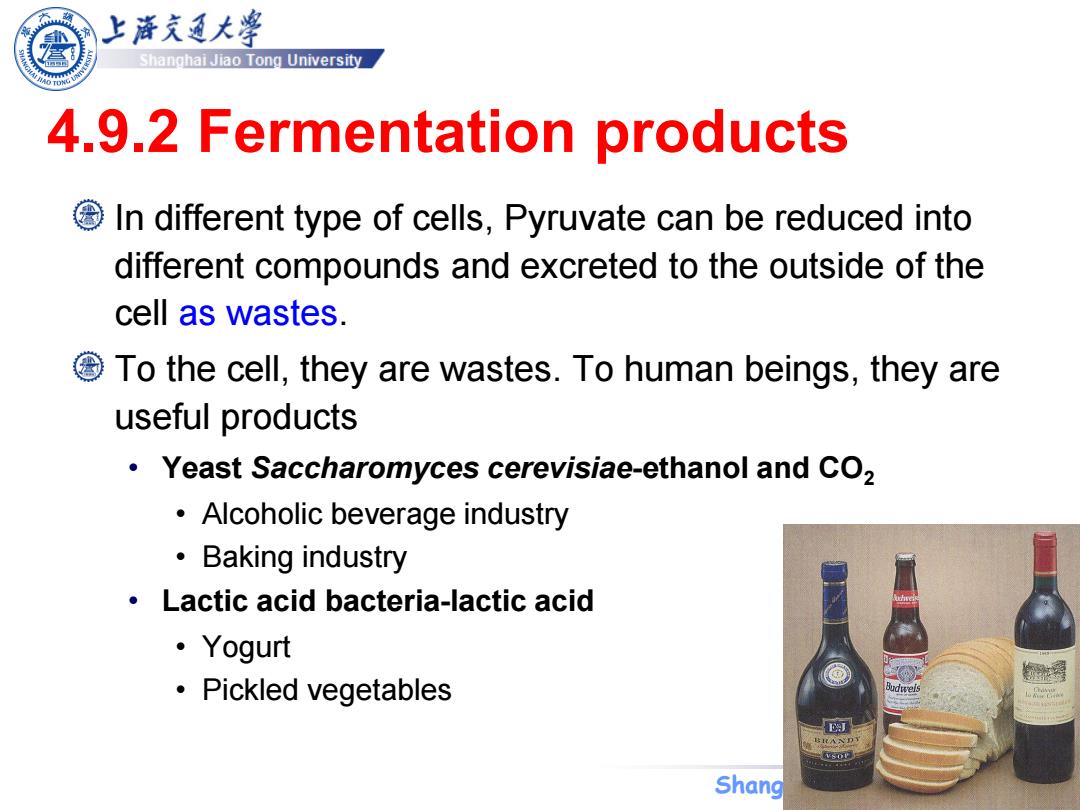
Second Redox Reaction of Glycolysis NADH(oxidized)then transfer hydrogen atoms to pyruvate (reduced)to become NAD+so enough NAD+ will be available to oxidize more Glyceraldehyde-3-P 2 2-Phosphoglycerate P Enolase 2 Phosphoenolpyruvate 2 ADP Pyruvate kinase Stage Ill:Reduction Making 2/ NADH Pyruvate- Pyruvate:Formate lyase fermentation Lactate products NAD+ Pyruvate Acetate formate dehydrogenase decarboxylase Formate Lactate Acetaldehyde C02 hydrogenlyase NADH Alcohol H2+C02 dehydrogenase NAD+ Ethanol
Second Redox Reaction of Glycolysis NADH (oxidized) then transfer hydrogen atoms to pyruvate (reduced) to become NAD+ so enough NAD+ will be available to oxidize more Glyceraldehyde-3-P

上帝充通大学 Shanghai Jiao Tong University 4.9.2 Fermentation products In different type of cells,Pyruvate can be reduced into different compounds and excreted to the outside of the cell as wastes. 国 To the cell,they are wastes.To human beings,they are useful products Yeast Saccharomyces cerevisiae-ethanol and CO, Alcoholic beverage industry ·Baking industry Lactic acid bacteria-lactic acid ·Yogurt ·Pickled vegetables Shang
Shanghai Jiao Tong University 4.9.2 Fermentation products In different type of cells, Pyruvate can be reduced into different compounds and excreted to the outside of the cell as wastes. To the cell, they are wastes. To human beings, they are useful products • Yeast Saccharomyces cerevisiae-ethanol and CO2 • Alcoholic beverage industry • Baking industry • Lactic acid bacteria-lactic acid • Yogurt • Pickled vegetables